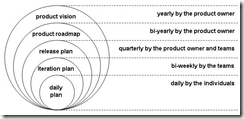I have been thinking of writing a Nant task for Sandcastle for quite some time so I decided to knock something up . I have been fairly busy at work and havent been able to spend time on this. As i find some time on the train I just finished this piece of code.
I am quite a fan of Nant and the Nant contrib project has a task for NDoc which kind of inspired me to do one for Sandcastle. Sandcastle supports the new frameworks in .Net quite well and most people who were using NDoc would have migrated to Sandcastle due to its capabilities for build purposes.
This task is intended to allow users who do not want to use sandcastle command line builder in there nant scripts as an external process. The logging of this task and the sandcastle output is also streamed into the nant log.
I have based my task schema on the bare minimal that will require direct configuration in nant. In any case you should be able to do all the configuration in the sandcastle project. What’s shown below is purely a because i am a developer and I need these features and so i think everyone is going to be happy with it :). '
The following readme is placed in a text file along side the installer zip file.
The Sandcastle for task is built using the following components
Nant 0.86
Sandcastle Help File Builder
Sandcastle UI Builder
The core components required by the task are installed by the installer.
The installer allows you to install the task into a folder that you choose but does not check to see if Nant is installed in the same directory
Generally C:\Program Files\Nant\bin
Installing the task in the same folder as Nant is the only scenario that has been tested.
The path of nant should be added to the path variable as instructed in the Nant installation instructions
In addition to installing the task the following configuration for the Nant.exe.config file needs to be added.
Under the elements
<configuration>
...<nant>
......<frameworks>
...........<platform>
................<task-assemblies>
<!-- Nant sandcastle task-->
<include name="NAnt.Contrib.Tasks.Sandcastle.dll"/>
If you wish to add the Sandcastle task into another folder, the Nant probing paths need to be set to look at this folder. It is not recommended however
Source code is also provided and feel free to customise it or edit it , The source code is present at Install folder\sandcastle task\Src
I have tested this on my system by installing sandcastle, nant and this task and it works fine. Obviously i am saying “Works on my machine”, if you see any problems using it please let me know about it.
The Sandcastle task schema for the Nant script should be as below, project and output are the only two required attributes,
<sandcastle project="${Sandcastle project file path}" output="Output location for Sandcastle files"> <showMissing remarks="false" params="false" returns="false" values="false" namespaces="false" summaries="false"> </showMissing> <document internals="false" privates="false" protected"="false" attributes="false" copyrightText="" feedbackemail="" footer=""> </document> </sandcastle>
e.g Nant build file
<?xml version="1.0"?> <project name="Hello World" default="build"> <property name="projfile" value="C:\Documentation.shfb"/> <target name="build"> <sandcastle project="${projfile}" output="C:\Documentation\Help"> <document copyrightText="Copyright@ TSQLDOTNET Limited" feedbackemail="srinivas.s@tsqldotnet.com"/> </sandcastle> </target> </project>
Link: Nant Sandcastle Installer
The download consists of the prerequisites hence it is bulky at 40MB, The prerequistes include Sandcastle installer , Win 3.1 installer and DotnetFx

